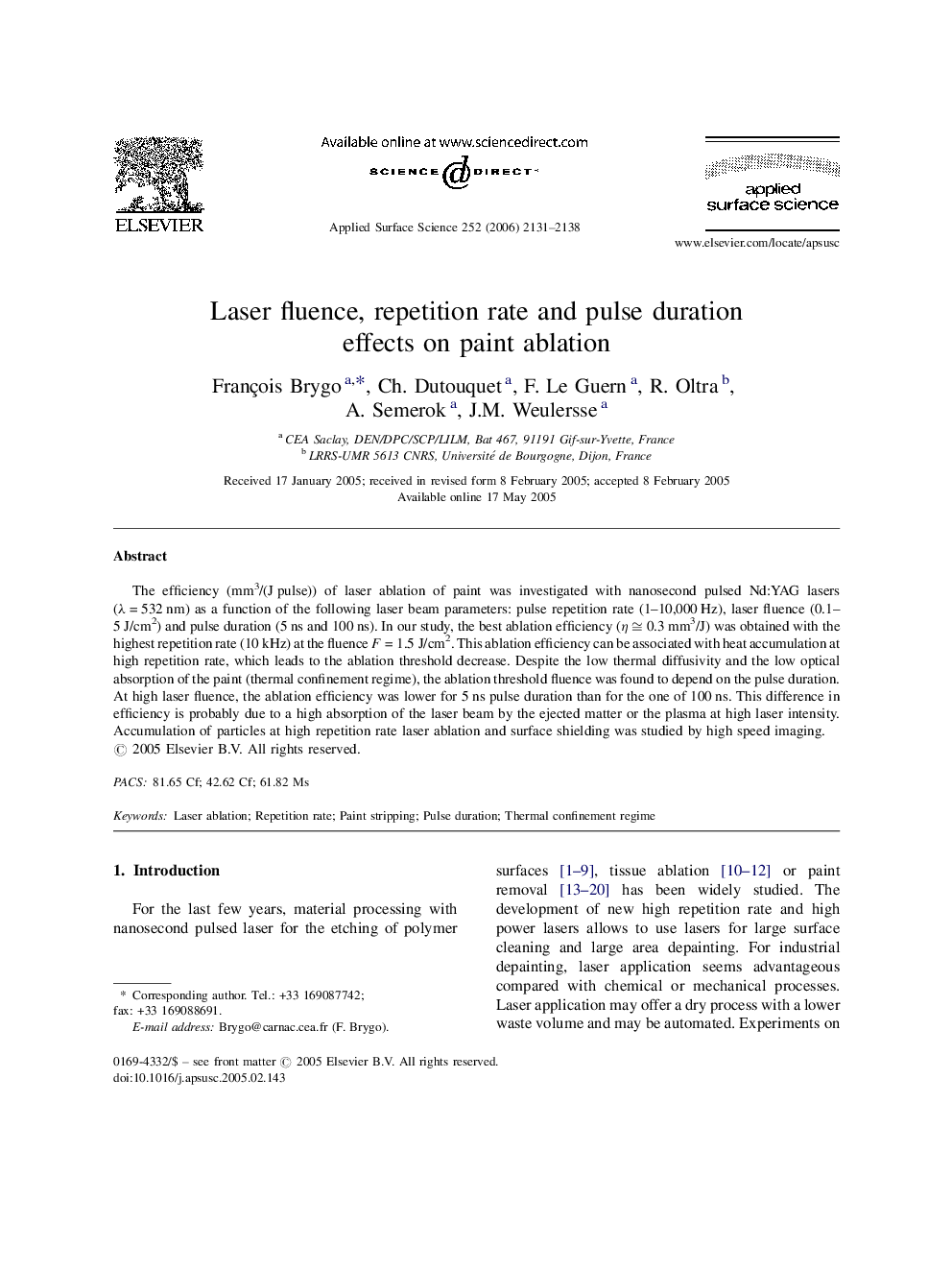| Article ID | Journal | Published Year | Pages | File Type |
|---|---|---|---|---|
| 5367612 | Applied Surface Science | 2006 | 8 Pages |
The efficiency (mm3/(J pulse)) of laser ablation of paint was investigated with nanosecond pulsed Nd:YAG lasers (λ = 532 nm) as a function of the following laser beam parameters: pulse repetition rate (1-10,000 Hz), laser fluence (0.1-5 J/cm2) and pulse duration (5 ns and 100 ns). In our study, the best ablation efficiency (η â  0.3 mm3/J) was obtained with the highest repetition rate (10 kHz) at the fluence F = 1.5 J/cm2. This ablation efficiency can be associated with heat accumulation at high repetition rate, which leads to the ablation threshold decrease. Despite the low thermal diffusivity and the low optical absorption of the paint (thermal confinement regime), the ablation threshold fluence was found to depend on the pulse duration. At high laser fluence, the ablation efficiency was lower for 5 ns pulse duration than for the one of 100 ns. This difference in efficiency is probably due to a high absorption of the laser beam by the ejected matter or the plasma at high laser intensity. Accumulation of particles at high repetition rate laser ablation and surface shielding was studied by high speed imaging.
